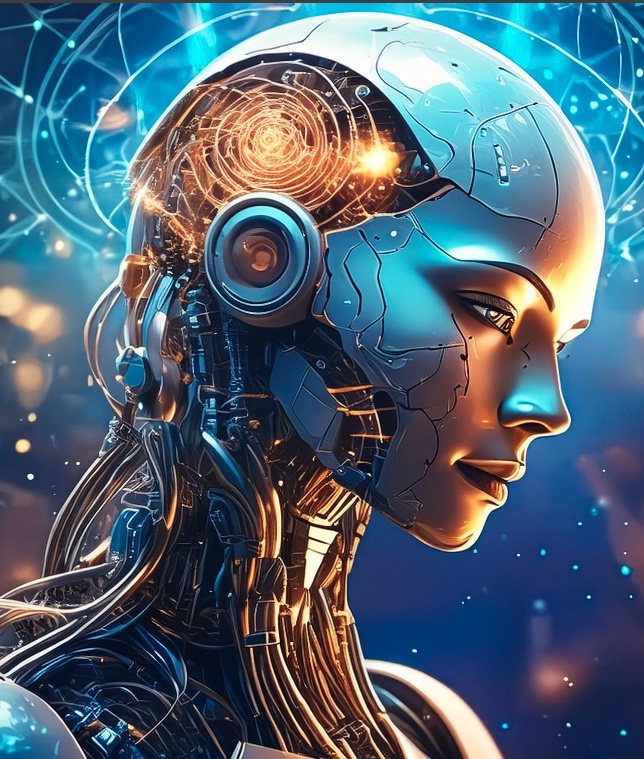Nvidia law of physics: “The next wave of artificial intelligence will be physical AI”. These are the words spoken by Jansen Huang, head of Nvidia, during a keynote at Computex, the technology fair currently taking place in Taipei. What is he referring to? “To an artificial intelligence that understands the laws of physics, which can work among us”. After witnessing the GenAI boom, mostly in specific services by Microsoft and Google (ChatGPT is anything but ‘specific’), Nvidia is now beginning not only to ride the wave of technology but to dictate its flow.
According to the company, physical artificial intelligence consists of ‘models capable of understanding instructions and autonomously performing complex tasks in the real world’. One incipit is the Isaac AI development platform, already used to improve efficiency in factories and warehouses, including those of BYD Electronics and Siemens. Isaac is used to research, develop and produce “tens of millions” of machines and autonomous robots powered by artificial intelligence, including industrial arms and humanoids.
AI army on the rise
To date, more than five million Nvidia robots have been tested and validated worldwide, including through digital twin simulations in Omniverse, a platform of APIs, SDKs, and services that allow developers to easily integrate OpenUSD and RTX rendering technologies for enterprise use. “All factories will be robotic,” Huang continued. “Factories will orchestrate robots, and robots will build robotic products.” Nvidia plans to position itself as a central pivot in the upcoming development of AI projects.
Not surprisingly, by 2025, it will send partners the Blackwell Ultra chip, dedicated to artificial intelligence inference, while the next-generation AI chip, Rubin, will arrive in 2026. This semiconductor, as far as we know, will include new graphics processing units (GPUs), a new central processing unit (CPU) called Vera, and advanced networking chips. The Blackwell computing platform includes the new B200 chip, consisting of 208 billion transistors.
Welcome to the Digital Humans
It will be faster and more powerful than its predecessor, the highly sought-after $40,000 H100 chip named after computer scientist Grace Hopper, who is behind some of the world’s most powerful artificial intelligence models. The Blackwell platform is named after mathematician David Blackwell, who was the first black scholar inducted into the National Academy of Sciences. Announcements that have done well for the Californian giant’s coffers. At the end of the quarter, the manufacturer exceeded Wall Street’s expectations with record sales of $26 billion, up 262 per cent year-on-year.

Just at Computex, we had the opportunity to discover ACE. The acronym stands for Avatar Cloud Engine, i.e. nothing more than a platform dedicated to creating chatbots that are no longer just text but have a face and voice. The plus? ACE is a toolbox for partner developers, who can implement their digital humans wherever they want, from b2b apps to video games. Here is the first (only?) element of interest: the technology does not remain the prerogative of the individual vendor but becomes a democratic means of innovation, only conceptually, hardly cost-wise.
Complete ecosystem
Nvidia ACE is generally available for the cloud, in early access for Pc RTX AI, used by customer care, gaming and healthcare, including Dell Technologies, ServiceNow, Aww Inc., Inventec, and Perfect World Games. Within the package, there are several modules. From Riva ASR, TTSeNMT, for automatic speech recognition, text-to-voice conversion and translation, to Nemotron LLM, for speech understanding and contextual response generation. Then, Audio2Face, for realistic facial animations based on audio tracks, and Omniverse RTX, for recreating realistic skin and hair in real-time.
And that’s not all: Audio2Gesture generates body gestures based on audio tracks, while Nemotron-3 4.5B is a new Small Language Model (SLM) created specifically for low-latency PC AI RTX device inference. “Digital humans will revolutionize industries,” said Jensen Huang. “Breakthrough discoveries in multimodal language models and neural graphics, provided by NVIDIA ACE to our ecosystem of developers, are bringing us closer to a future of intent-based computing where interacting with computers is as natural as interacting with humans.”



